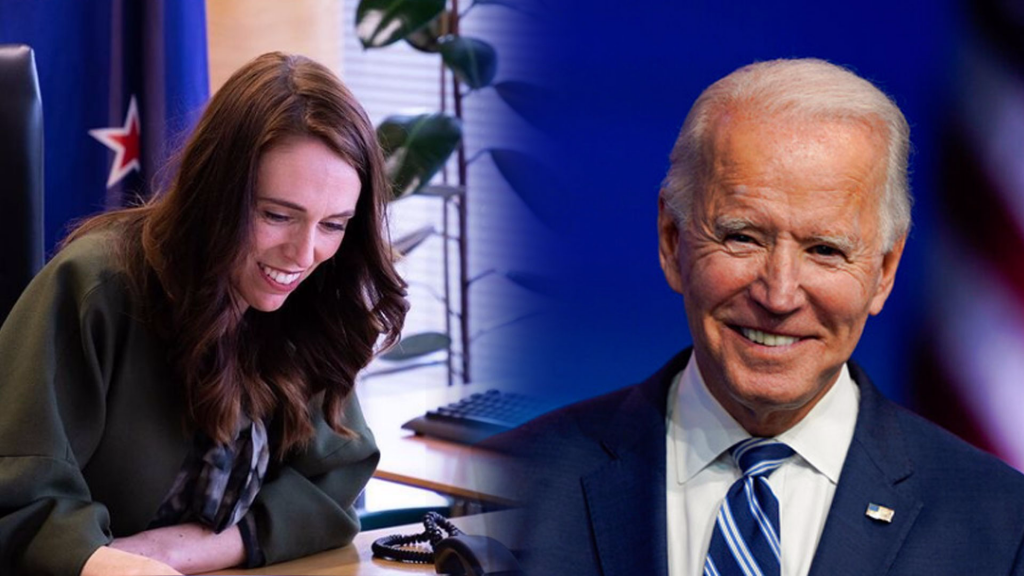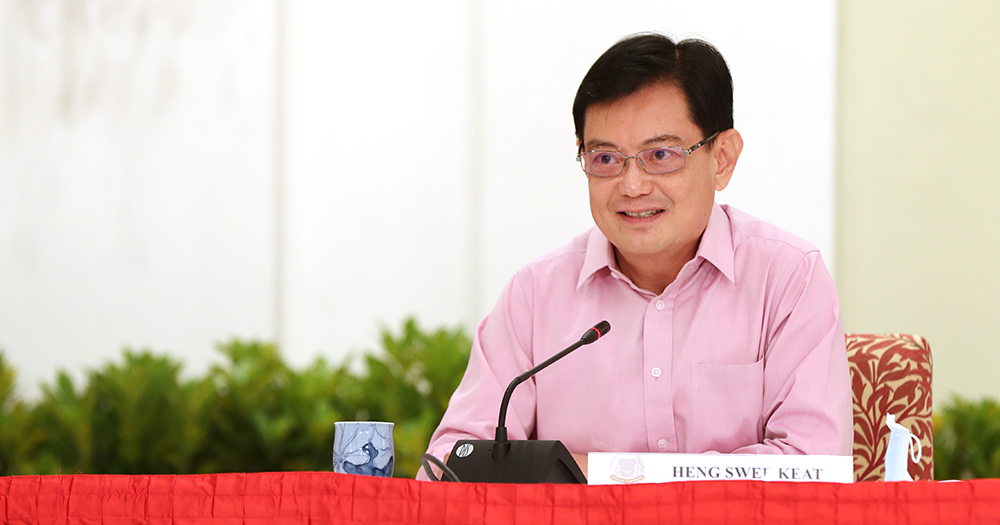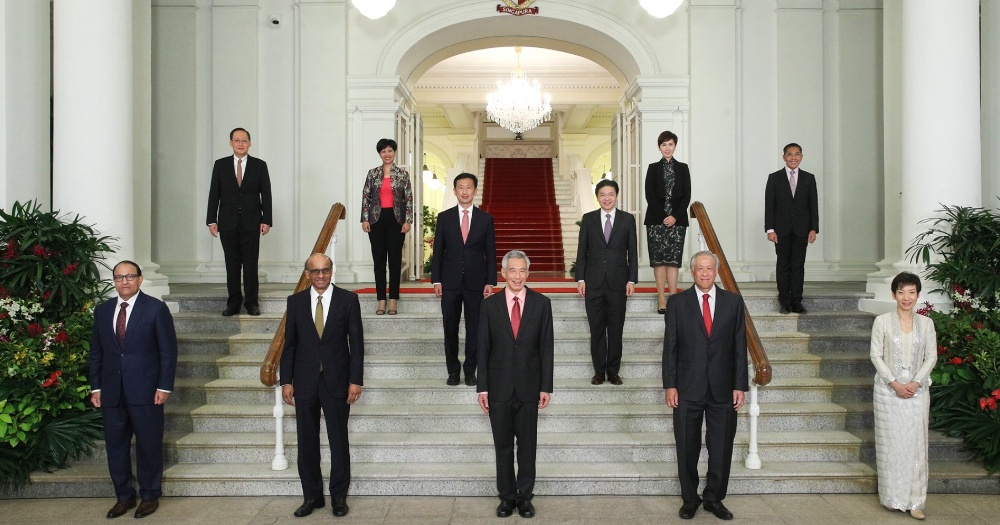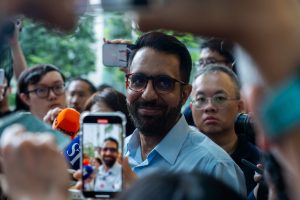Top image: Lee Hsien Loong/Facebook
When asked to picture someone with prime ministerial calibre, who comes to mind?
Is it the incumbent PM Lee Hsien Loong who reassured Singaporeans in his circuit breaker speech last year, saying, “If any country can see this through, it is Singapore”?
Is it Senior Minister Tharman Shanmugaratnam who awed many with his sharp responses at the 2015 St Gallen Symposium in Switzerland, as he was grilled by BBC Hardtalk presenter Stephen Sackur?
Or does Leader of the Opposition Pritam Singh come to mind, as he crossed swords with PM Lee in Parliament last year over “free rider” opposition voters?
With Heng Swee Keat’s withdrawal from the race to be PM and the recent cabinet reshuffle, the talk of the town has been: Who will the next PM be? Who has the character of a PM based on existing expectations? Lots of guessing has been going on, but are these the most important questions right now?
As an independent nation, this will only be our third time witnessing a leadership transition. Politically, Singapore has evolved since the previous transitions, with more vocal Singaporeans, greater representation by the Opposition in Parliament, and the introduction of social media which accelerates the spread of information and changes how political discourse unfolds.
The upcoming handing over of the baton will be a turning point, which makes this an apt time to ask: How should an ideal PM be like? How should our leadership succession be? Are there long-held assumptions regarding these that should be reviewed? These questions are a part of a conversation that we should embrace as we mature politically.
Since assumptions about the premiership have gone unquestioned for a long time, everyone went agog over recent developments. DPM Heng Swee Keat cited age as a reason for standing aside, and the press described it as a “rare political upset”, “a surprise” and “shocked announcement”, because leadership successions in Singapore have always been known to be predictable.
We are too used to a sanitised version of local politics: everything has to be well-orchestrated. We expect a PM to be of a certain age. Faced with disruptions, we exclaim that the sword of Damocles is now hanging over our heads.
Other countries too have always looked to Singapore as an exceptional, “third-world-to-first” nation with a well-oiled system. Many of them are constantly in political turmoil, looking to us as a beacon of hope for political stability because of our well-engineered politics. Any slight deviation from this seems like a big deal.
But I don’t think it is necessarily a bad thing. And contrary to what pessimists say, political instability seems far-fetched to me.
In a world where things are constantly changing, these recent developments are an opportunity to show Singaporeans and the world that we can navigate these developments.
Embracing unpredictability
Maybe it’s a blessing in disguise that events of the last month have unfolded the way they did. There is a lesson here: that twists and turns are normal in politics, and we should embrace it, as long we eventually find our way out of it.
To start with, we have long bought into the myth that political successions have to be smooth and uneventful. But this has never been the case.
Right from the beginning, after the PAP won the 1959 general election with a landslide, it was uncertain who the prime minister would be. A newspaper report after the polls quoted party chairman Toh Chin Chye as saying: “We cannot let you know at the moment who is going to be the prime minister or who will hold office, as the CEC has not made any firm decision.”[/vc_column_text][/vc_column][/vc_row]

When the party’s central executive committee eventually voted, Lee Kuan Yew became prime minister by one vote against Ong Eng Guan. The result was initially a tie, and Toh used his casting vote to break it.
Moving on to the first leadership transition, Lee said publicly at the 1988 National Day Rally that Goh Chok Tong was not his first choice for premiership. He had preferred Tony Tan (who declined), who later became the country’s seventh president.
Lee Hsien Loong’s cancer diagnosis in 1992 almost scuppered succession plans as well, since he was expected to take over from Goh in the years to come.
Despite the complications, things worked out fine.
With a history of 56 years and only three prime ministers thus far, Singapore is still a young nation building its political culture and norms. We shouldn’t let predictable and engineered successions of the past set precedents. Such a process takes time, and it shouldn’t matter if the PM-to-be has yet to be selected.
The answer will come eventually, earliest at the next PAP CEC election in November 2022, or during the mid-term reshuffle before the next general election due by November 2025.
Of age and runways
At the moment, there seems to be an unspoken rule that the person taking the top job has to be in the mid-50s and able to serve for at least one to two decades. It is also not ideal for the PM to continue with the job after 70, as signalled by PM Lee before the pandemic. Maybe it is time to review these assumptions to see if they remain relevant.
Do we need to reject a prime minister who, by our standards, is “too old” or “too young”? Across the world, there are leaders who have taken the helm and done well despite their age.
Jacinda Ardern, who became New Zealand’s PM at a young age of 37 in 2017, was praised for her compassion and composure during the Christchurch mosque shooting two years ago. More recently, she was lauded for her leadership in controlling the Covid-19 situation, which explains the low number of cases in New Zealand.
There is also US president Joe Biden, who had a positive and steady approval rating at the 100-day mark of 54.4 per cent. He accelerated the Covid-19 vaccine rollout and introduced a relief and stimulus package to help low- and middle-income Americans to make ends meet during the pandemic, among others. All these, despite Biden being the oldest president in American history elected into office at 78.

An older leader has the experience and institutional memory to be a trusted pair of hands, especially during difficult times. For younger leaders, what they lack in experience, they make up with a fresh vision and new perspectives on old ideas. They can inspire ministries to chart paths that are more forward-thinking, instead of sticking with tried-and-tested formulas that may no longer be effective in a world of constant flux.
Either way, age can be a positive quality. In selecting the next PM, there is no need to be constrained by candidates and specific age brackets. As long as the candidate cares for Singapore, can do the job well, and puts up a capable team to rely on for support, age should not matter.
Age aside, the party can even reconsider if such a long runway for premiership is still necessary. I wrote about this in a recent commentary.
Unlike some countries, I am not asking for frequent changes in leadership because this could lead to political instability. But it may not be the end of the world to have a one- or two-term PM, instead of expecting someone to serve beyond a decade based on precedents. This might solve future succession dilemmas.

1) A PM must garner majority support from lawmakers of the ruling party.
2) A PM must have integrity and cares for the country.
3) A PM must deliver on bread-and-butter issues and develop the country economically.
Although we don’t have a direct say in deciding the next PM, Singaporeans are watching to see if the PAP can adapt with the times in its selection process, and not be bogged down by precedents. At the same time, we should also understand that selecting a PM comes with complications and that is perfectly normal.
That brings me to a last suggestion: Can we have an open leadership contest like in Britain for potential PM candidates to participate in?
This will make the succession process more transparent because we can better understand why a candidate garners the most support from party cadres, and how the person is assessed, instead of a sudden announcement that a particular person has been chosen without a strong justification.
The current selection process is opaque to the public, done “smoothly and quietly” as said by Goh Chok Tong. We do not know how cadres exercise their votes in the internal poll and their thought-process, nor the number of votes each candidate receives.
This suggestion may sound naive, given the PAP’s aversion to public power struggles. But who knows—this change to the PM playbook might just be what it takes for us to accept the twists and turns, which are commonly seen in the politics of most democracies as a norm, rather than the smooth-sailing narrative we are used to.







